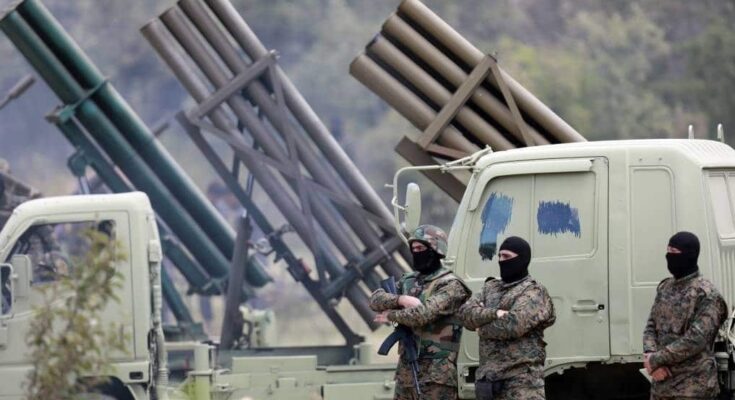
Israel’s pager operation plan against Hezbollah goes back many years. It all began with the acquisition of a new series of pagers to a militia group with an extensive network of fighters.
According to The Washington Post, the AR924 pager was slightly bulky but rugged, built to survive battlefield conditions. It featured a waterproof Taiwanese design and an oversized battery that could run for months without recharging.
They bought 5,000 pagers
Hezbollah leaders were so impressed that they bought 5,000 of them and began distributing them to mid-level fighters and support staff in February.
None of the users had any idea that they were carrying a sophisticated Israeli bomb, and even after thousands of the devices went off in Lebanon and Syria, few noticed the most ominous feature of the bombs: a two-step decryption process that ensured that most users would be holding the pager with both hands when it went off.
Mossad’s multi-year plan
The idea for the pager operation against Hezbollah came about in 2022, according to Israeli, Middle Eastern, and US officials familiar with the events.
Gradually, some parts of the plan began to be sorted out a year before the October 7th Hamas attack that put the region on the warpath. It was a time of relative calm on Israel’s war-scarred northern border with Lebanon.
When Israel Targeted Hezbollah
Hezbollah is by far the most powerful of the half-dozen Iranian-backed militias with weapons aimed at Israel.
Israeli officials have watched with growing concern as the Lebanese group has added new weapons to an arsenal already capable of hitting Israeli cities with tens of thousands of precision-guided missiles.
Mossad, the Israeli intelligence agency responsible for countering foreign threats to the Jewish State, had worked for years to infiltrate the group with electronic surveillance and human informants.
Over time, Hezbollah leaders grew concerned about the group’s vulnerability to Israeli surveillance and hacking, fearing that even ordinary cell phones could be turned into Israeli-controlled eavesdropping and tracking devices.
Tel Aviv’s Trojan Horse in Hezbollah
Thus was born the idea of creating a kind of communications Trojan horse and the pager operation against Hezbollah, officials said. Hezbollah was looking for tamper-proof electronic networks for relaying messages, and Mossad came up with a few gimmicks that would lead the militia group to buy equipment that looked ideal for the job—equipment that Mossad designed and assembled in Israel.
The first part of the project, booby-trapped walkie-talkies, was imported into Lebanon by Mossad nearly a decade ago in 2015. The mobile radios contained oversized batteries, hidden explosives, and a transmission system that gave Israel full access to Hezbollah’s communications.
For nine years, the Israelis were content to eavesdrop on Hezbollah, officials said, while retaining the option of turning the radios into bombs in a future crisis. But then came a new opportunity and a shiny new product: a small pager packed with a powerful explosive.
The shadowy sales pitch and the pager operation against Hezbollah
Because Hezbollah’s leaders were wary of the possibility of sabotage, the bombers could not have come from Israel, the United States, or any of Israel’s other allies.
In 2023, the group began receiving solicitations for the bulk purchase of Taiwanese Apollo bombers, a well-known brand and product line with global distribution and no discernible ties to Israeli or Jewish interests. The Taiwanese company had no knowledge of the plan, officials said.
A Hezbollah-trusted marketing official with ties to Apollo made the sales proposal. As it turned out, the actual production of the devices had been outsourced, and the marketing official was unaware of the operation and did not know that the bombers were being physically assembled in Israel, supervised by the Mossad.
The Mossad pagers, each weighing less than three ounces, had a unique feature: a battery that concealed a tiny amount of a powerful explosive, according to officials familiar with the plot.
Remote access in the pager operation against Hezbollah
The Mossad had remote access to the devices. A signal from the agency could cause thousands of devices to explode simultaneously. However, to ensure maximum damage, the explosion could also be triggered by a special two-step process required to view secure messages that had been encrypted.
“You had to push two buttons to read the message,” said one official. In practice, that meant using both hands. In the ensuing explosion, users would almost certainly “have injuries in both hands,” the official said, and thus “would not be able to do battle.”
“It was clear that there were some risks” regarding the pager operation against Hezbollah
Everyone, including Netanyahu, acknowledged that the bombers could do incalculable damage to Hezbollah. But they could also provoke a fierce response, including a massive retaliatory missile attack by surviving Hezbollah leaders, with Iran possibly joining the fight.
“It was clear that there were some risks,” said one Israeli official. Some, including senior Israel Defense Forces officials, warned against the possibility of a full escalation with Hezbollah, even as Israeli soldiers continued operations against Hamas in Gaza.
Others, notably Mossad, saw an opportunity to disrupt the status quo with “something more intense.”



